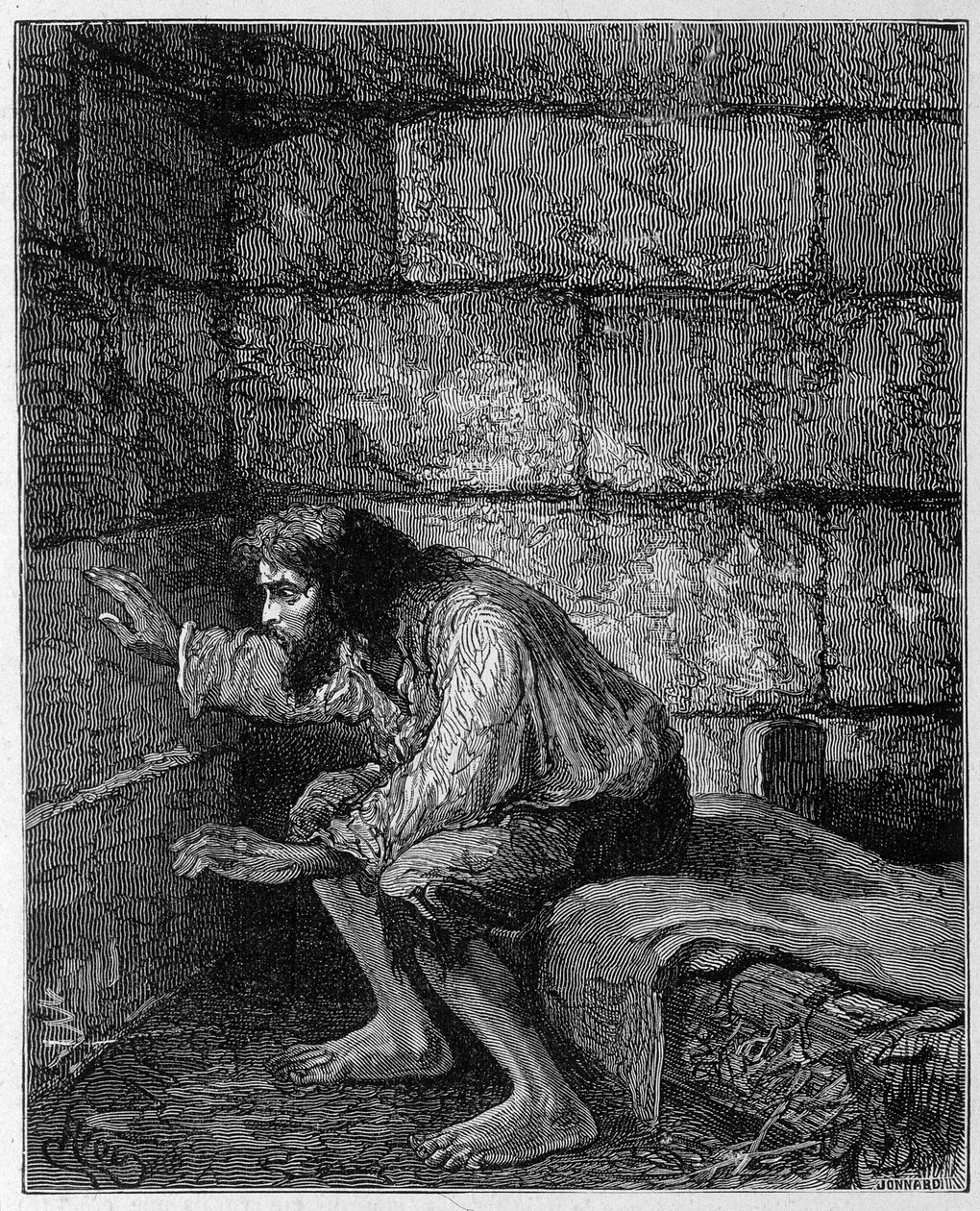Re-examining Dumas's The Count Of Monte Cristo: A Critical Analysis

Table of Contents
The Allure of Revenge: Exploring Edmond Dantès's Path
Edmond Dantès's quest for revenge forms the very heart of The Count of Monte Cristo. His journey, from wrongly accused sailor to wealthy and influential Count, is fueled by a burning desire for retribution against those who unjustly imprisoned him. But is his revenge justifiable? The novel presents a complex moral dilemma, forcing us to question the ethical implications of Dantès's meticulously planned acts of vengeance.
While readers may initially sympathize with Dantès's plight, the destructive nature of his revenge becomes increasingly apparent. His pursuit of vengeance consumes him, transforming him from a wronged individual into a manipulator who inflicts suffering on those around him. This raises important questions about the cyclical nature of violence and the lasting impact of revenge on the avenger themselves.
- Examples of Dantès's meticulously planned acts of revenge: His manipulation of Fernand Mondego's career, his financial ruin of Danglars, and his calculated exposure of Villefort's crimes all demonstrate his chilling precision.
- The psychological toll of revenge on Dantès: While Dantès achieves a sense of satisfaction, the process leaves him emotionally scarred, isolated, and ultimately unfulfilled. His relentless pursuit of revenge arguably prevents him from finding true happiness or peace.
- Comparison with other literary portrayals of revenge: Dantès's path can be compared to other literary figures driven by revenge, such as Hamlet or Medea, highlighting the universality of this powerful emotion and its devastating consequences.
Justice and Injustice: A Deeper Look at the Narrative
The Count of Monte Cristo is not merely a tale of revenge; it's a scathing critique of the French justice system in the 19th century. The novel vividly portrays the injustices suffered by Dantès, highlighting the prevalence of wrongful imprisonment, betrayal, and the abuse of power within the legal system.
Dumas masterfully depicts a world where wealth and influence determine the outcome of justice. The novel forces us to question whether Dantès's methods, while seemingly justified by the injustices he faced, ultimately achieve true justice or merely replicate the very injustices he sought to overcome. Does he become the very thing he fought against?
- Specific examples of injustice in the novel: The fabricated charges against Dantès, the complicity of Villefort and his refusal to investigate the truth, and the blatant disregard for due process.
- The role of chance and fate in shaping Dantès's journey: The discovery of the treasure on Monte Cristo is a pivotal moment, highlighting the role of chance in Dantès's transformation and his ability to exact his revenge.
- Comparison of Dantès's methods of justice with the legal system: Dantès's extrajudicial actions starkly contrast with the flawed legal processes depicted in the novel, raising important questions about the limits of the law and the pursuit of justice outside its confines.
The Power of Wealth and Social Class: A Social Commentary
Dumas's novel offers a compelling social commentary on 19th-century France, vividly portraying the rigid social stratification of the time. The transformation of Edmond Dantès from a relatively poor sailor to the immensely wealthy Count of Monte Cristo underscores the profound impact of wealth and social class on power dynamics. This transformation allows him to manipulate events and exact his revenge, demonstrating the inextricable link between wealth and power in this historical context.
The Count of Monte Cristo subtly critiques the inherent inequalities of the system, showing how social mobility is often restricted by class barriers. Dumas masterfully uses the contrasting characters to highlight the significant differences in power and privilege based on social standing.
- Examples of characters representing different social classes: The comparison between Dantès's humble beginnings and the aristocratic lifestyles of characters like the Villeforts and Mondegos showcases the vast social chasm.
- The impact of wealth on power dynamics: Dantès's newfound wealth allows him to manipulate social situations, control information, and ultimately orchestrate the downfall of his enemies.
- Dumas's social critique in the context of 19th-century France: The novel reflects the social and political realities of post-revolutionary France, highlighting the persistent inequalities that existed despite the ideals of liberty and equality.
The Morality of Vengeance: A Philosophical Examination
The Count of Monte Cristo is rife with moral ambiguities. The novel challenges readers to grapple with the line between justice and revenge, forcing us to contemplate the consequences of Dantès's actions and their impact not only on his victims but also on his own soul. While initially driven by a righteous anger, Dantès's relentless pursuit of revenge raises questions about the moral cost of vengeance.
The novel also explores themes of forgiveness and redemption, prompting reflection on the possibility of escaping the cycle of violence. Ultimately, the ambiguous ending leaves the reader to ponder the true meaning of justice and the lasting impact of Dantès's actions.
- Examples of morally ambiguous choices made by characters: The actions of all the main characters, including Dantès himself, are often morally questionable. Their decisions reflect the complexities of human behavior.
- The psychological effects of Dantès’s quest for vengeance on his character: The long-term effects of his quest for revenge include isolation, emotional detachment, and a sense of unfulfillment, even in success.
- Possible interpretations of the novel’s ending: The ambiguous nature of the ending allows for multiple interpretations, depending on the reader's perception of Dantès's ultimate moral state.
Conclusion: A Re-evaluation of The Count of Monte Cristo
This re-examination of The Count of Monte Cristo reveals the novel's enduring power to provoke critical analysis. By exploring the intertwined themes of revenge, justice, social class, and morality, Dumas crafted a masterpiece that continues to resonate with readers today. The complexities of Dantès's actions, the flaws of the justice system, and the stark portrayal of social inequality all contribute to the novel's timeless appeal. The novel’s enduring relevance lies in its ability to challenge our own understanding of justice, revenge, and the human condition.
Re-examine Dumas's Count of Monte Cristo for yourself and share your interpretations! What are your thoughts on the moral implications of Dantès's actions? Continue the critical analysis of The Count of Monte Cristo – what are your thoughts?

Featured Posts
-
 Boosting Scotlands Coastal Ecosystem Seagrass Restoration Bids
May 05, 2025
Boosting Scotlands Coastal Ecosystem Seagrass Restoration Bids
May 05, 2025 -
 Nyc Suburbs Brace For Spring Snow 1 2 Inches Forecast
May 05, 2025
Nyc Suburbs Brace For Spring Snow 1 2 Inches Forecast
May 05, 2025 -
 Aritzias Response To Trump Tariffs No Planned Price Hikes
May 05, 2025
Aritzias Response To Trump Tariffs No Planned Price Hikes
May 05, 2025 -
 L Estrema Destra In Francia Perche Il Governo Insegue Marine Le Pen
May 05, 2025
L Estrema Destra In Francia Perche Il Governo Insegue Marine Le Pen
May 05, 2025 -
 Corinthians E Fred Luz Entenda Os Bastidores Do Fim Da Parceria
May 05, 2025
Corinthians E Fred Luz Entenda Os Bastidores Do Fim Da Parceria
May 05, 2025
Latest Posts
-
 Sabrina Carpenter Fortnite Festival All New Outfits Jam Tracks And Features
May 06, 2025
Sabrina Carpenter Fortnite Festival All New Outfits Jam Tracks And Features
May 06, 2025 -
 Fortnite Unlocking All Sabrina Carpenter Outfits
May 06, 2025
Fortnite Unlocking All Sabrina Carpenter Outfits
May 06, 2025 -
 Obtaining Sabrina Carpenter Skins In Fortnite A Step By Step Guide
May 06, 2025
Obtaining Sabrina Carpenter Skins In Fortnite A Step By Step Guide
May 06, 2025 -
 The New Sabrina Carpenter Fortnite Dances A Players Guide
May 06, 2025
The New Sabrina Carpenter Fortnite Dances A Players Guide
May 06, 2025 -
 Is Sabrina Carpenter Coming To Fortnite Release Date Predictions
May 06, 2025
Is Sabrina Carpenter Coming To Fortnite Release Date Predictions
May 06, 2025
